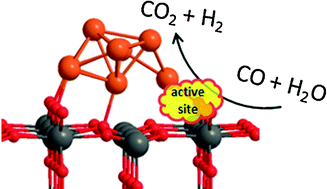The mechanism of the water-gas shift reaction on Cu/TiO2(110) elucidated from application of density-functional theory
Abstract
The

* Corresponding authors
a
Department of Chemistry, National Taiwan Normal University, 88, Section 4, Tingchow Road, Taipei 116, Taiwan
E-mail:
jjh@ntnu.edu.tw
Fax: +886-2-29324249
Tel: +886-2-29309085
The

 Please wait while we load your content...
Something went wrong. Try again?
Please wait while we load your content...
Something went wrong. Try again?
S. Peng and J. Ho, Phys. Chem. Chem. Phys., 2011, 13, 20393 DOI: 10.1039/C1CP21975H
To request permission to reproduce material from this article, please go to the Copyright Clearance Center request page.
If you are an author contributing to an RSC publication, you do not need to request permission provided correct acknowledgement is given.
If you are the author of this article, you do not need to request permission to reproduce figures and diagrams provided correct acknowledgement is given. If you want to reproduce the whole article in a third-party publication (excluding your thesis/dissertation for which permission is not required) please go to the Copyright Clearance Center request page.
Read more about how to correctly acknowledge RSC content.
 Fetching data from CrossRef.
Fetching data from CrossRef.
This may take some time to load.
Loading related content
